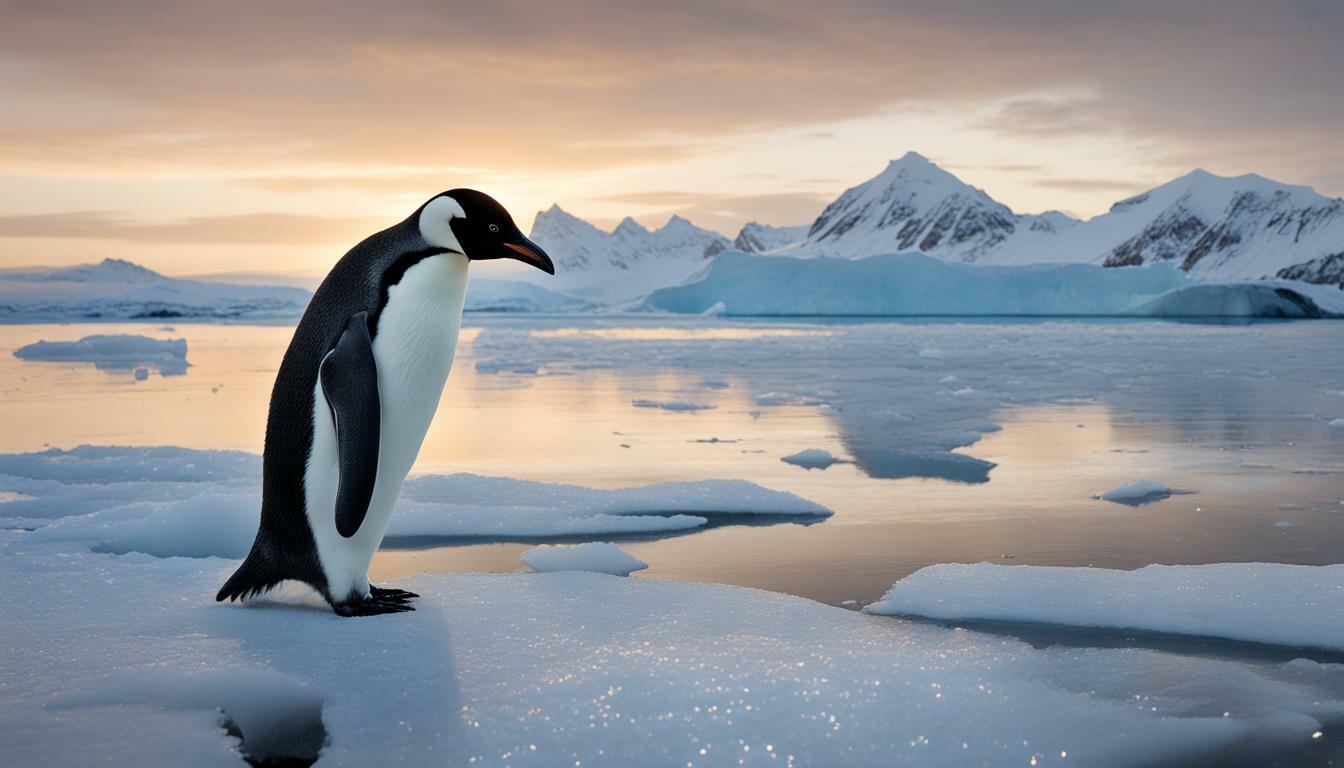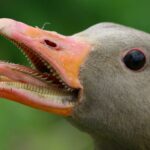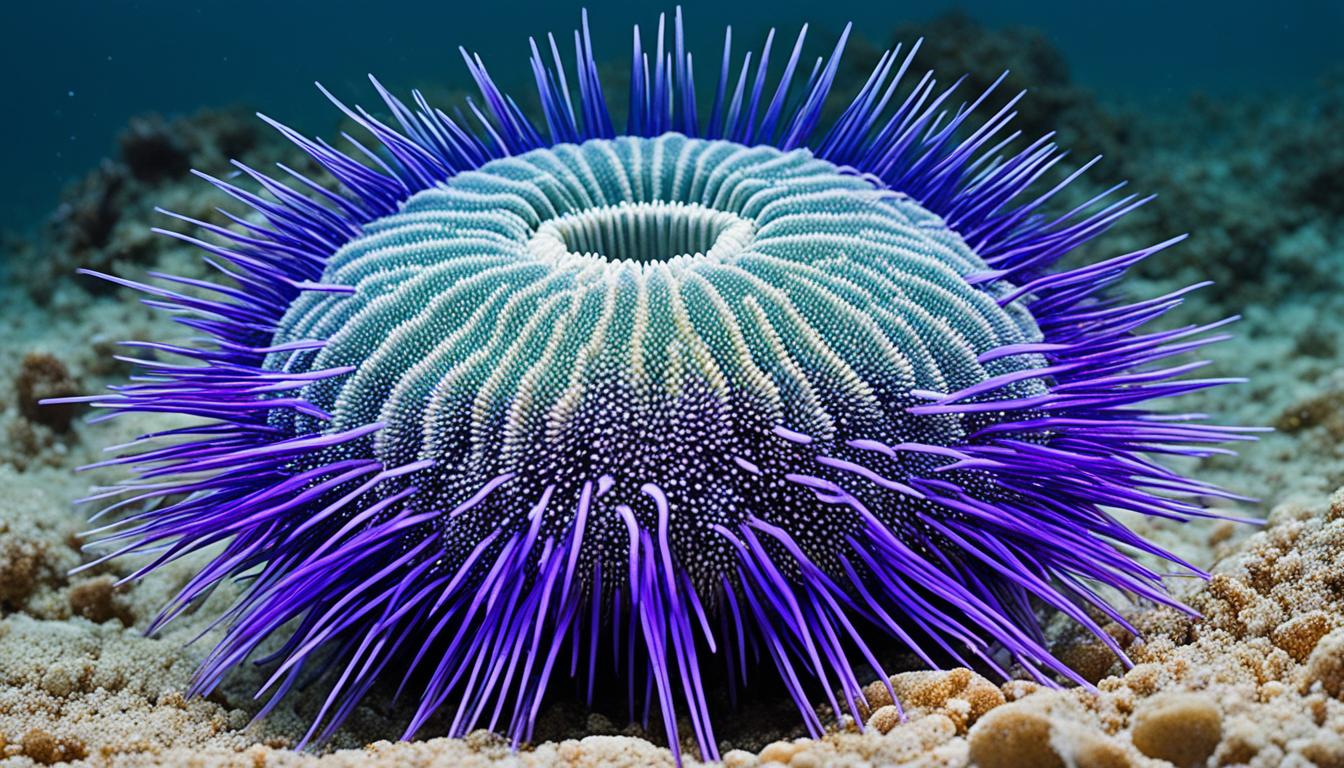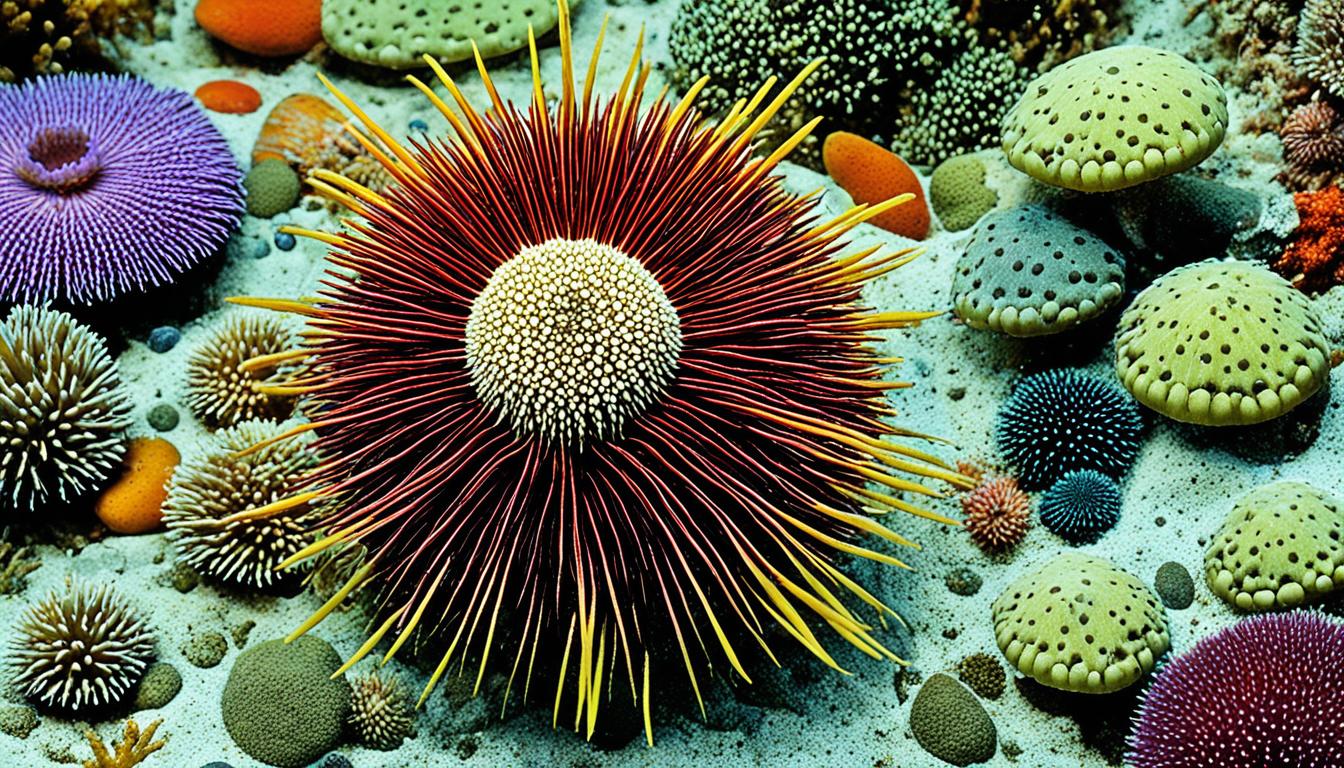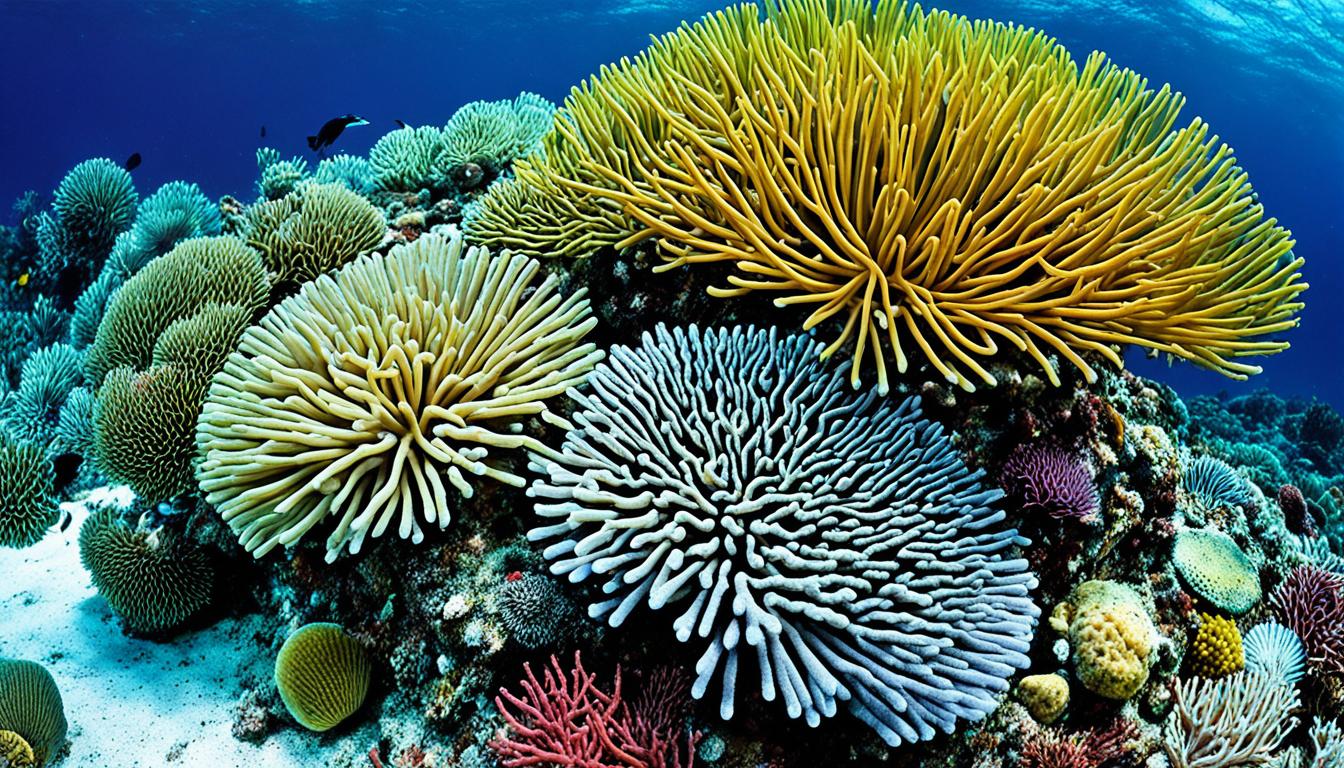When you picture a penguin, you might imagine a bird covered in a soft, furry coat. But is that really the case? Do penguins have fur, or is there something else going on with their unique appearance?
In fact, penguins do not have fur. While their feathers may resemble fur in some ways, they are not the same as the hair-like growths found on many other animals. However, the feathers of penguins are an incredibly important aspect of their biology, allowing them to survive and thrive in harsh, frigid environments.
Key Takeaways:
- Penguins do not have fur, despite their fuzzy appearance.
- Penguin feathers are specialized structures that play a crucial role in the birds’ survival.
- The coloration of penguin feathers is important for both camouflage and species recognition.
Understanding Penguin Feathers: More than Just Fur
While penguins may initially appear to have fur, their “fur” is actually a specialized type of feather that serves a variety of unique functions.
Compared to traditional feathers found on most birds, penguin feathers are densely packed and lack the typical hook structure. These features provide a sleek, water-resistant covering that enables penguins to glide effortlessly through the water.
However, the benefits of penguin feathers extend far beyond their hydrodynamic properties. They also play a crucial role in thermal regulation, allowing these birds to survive in some of the harshest environments on the planet.
Unlike fur, which simply acts as insulation, penguin feathers are able to trap air in a way that enhances their insulating capabilities. This allows them to maintain a warm, stable body temperature even in freezing temperatures.
Penguin Feathers vs. Fur
While fur may seem like a more effective means of insulation, it is actually less efficient than feathers at trapping air. Feathers possess a unique structure that allows them to trap air more effectively, keeping penguins warm in even the coldest conditions.
In fact, if penguins truly had fur instead of feathers, they would not be able to survive in their natural habitats. The insulating benefits of feathers are simply too important for their survival.
Another advantage of feathers over fur is their ability to repel water. Penguins are able to shake off excess water from their feathers, preventing them from becoming waterlogged and helping them to maintain their sleek, hydrodynamic form.
In conclusion, while penguins may seem to have fur, their specialized feathers are actually more efficient at keeping these birds warm and dry in their unique aquatic environments.
The Colorful World of Penguin Fur
Did you know that penguin fur comes in a variety of colors and patterns? These unique markings have important functions for penguins in their natural habitats.
The coloration of penguin fur serves different purposes depending on the species. For example, the black and white pattern of Emperor penguin fur blends in with the surrounding ice and snow, providing camouflage from predators. In contrast, the yellow feathers on the head of the King penguin are used in breeding displays and for species recognition.
In addition to providing camouflage and species recognition, the color of penguin fur also plays a role in thermoregulation. Darker colors absorb more sunlight, which can be beneficial in colder environments, while lighter colors reflect sunlight and help to keep penguins cool in warmer climates.
Although often referred to as “fur,” penguin feathers play a significant role in temperature regulation and insulation. A dense layer of feathers traps air close to the skin, creating a warm layer of insulation that helps penguins retain body heat. The structure of penguin feathers also allows for waterproofing, which is crucial for survival in their aquatic habitats.
Warm Penguin Feathers
In addition to insulation, penguin feathers also have specialized adaptations that allow for efficient thermoregulation. For example, the feathers on a penguin’s underside are shorter and more closely packed together, allowing for greater insulation in areas where heat loss is most significant.
The feathers on a penguin’s back are longer and more spread out, providing greater airflow and cooling to areas where heat buildup is a concern. These adaptations allow penguins to regulate their body temperature and survive in a range of environments, from the icy waters of Antarctica to the warm beaches of South Africa.
So, while penguins do not have fur in the traditional sense, their feathers play a vital role in their survival and adaptation to their unique environments. The colorful world of penguin fur and the specialized properties of their feathers are an essential part of what makes these birds so fascinating and adaptable.
Evolutionary Adaptations of Penguin Feathers
While most penguin species have feathers, some have adapted to have fur-like feathers to better suit their environments. For example, the rockhopper penguin has stiff, bristly feathers on their head and neck to aid in navigating rocky terrain. The crested penguin, on the other hand, has feathers that are shorter and smoother than traditional feathers, allowing it to move more easily through water.
These adaptations have helped these penguins to survive in harsh environments, such as rocky shores and deep ocean waters. The evolution of different types of feathers has allowed penguins to better regulate their body temperature, move more efficiently through their habitat, and even camouflage themselves from predators.
Overall, the diversity of feather types among penguin species highlights the versatility and adaptability of these birds. While feathers are essential for all penguins, the specific adaptations they possess have allowed them to thrive in their unique environments.
The Role of Penguin Feathers in Thermal Regulation
While penguins are often associated with cold environments, their specialized feathers enable them to regulate their body temperature and stay warm. These feathers are crucial for their survival in harsh environments, providing insulation and protection from the elements.
The structure of penguin feathers is unique, with interlocking barbs that trap air and provide insulation. This insulation is particularly important when penguins are swimming in cold water, as it helps to prevent heat loss and keep their bodies warm.
Penguin feathers also play a key role in regulating body temperature. When a penguin is too warm, it can fluff up its feathers to allow more air to circulate around its body, cooling it down. Conversely, when a penguin is too cold, it can flatten its feathers to trap more air, which helps to retain heat.
Overall, penguin feathers are essential for thermal regulation in these unique birds. Not only do they keep them warm in cold environments, but they also allow them to regulate their body temperature in a way that is vital for their survival.
Penguin Feathers: Key to Survival in Harsh Environments
Have you ever wondered how penguins manage to survive in the icy and windy conditions of Antarctica and other cold regions? While some people may think that penguins have fur, in reality, they possess a specialized type of feathers that play a crucial role in their survival. These feathers provide insulation, allowing penguins to maintain their body temperature and conserve energy in harsh environments.
The unique feather structure of penguins is not fur-like at all, but rather a finely tuned adaptation that enables them to thrive in the coldest regions on the planet. Unlike fur, feathers are lightweight and offer superior insulation against the cold. In fact, bird feathers are some of the best insulators known to science.
Penguin feathers are densely packed and have a unique structure with a central shaft and numerous barbs that overlap. This structure enables the feathers to trap air, which acts as an insulating layer against the cold. The dense layer of feathers also helps to keep the skin dry, preventing heat loss through conduction and evaporation.
Feathers also play a crucial role in helping penguins regulate their body temperature. During periods of high activity or when the weather warms up, penguins can fluff up their feathers to release heat and cool down. Conversely, when it gets colder, they can lay their feathers flat to lock in warmth.
In conclusion, while penguins are often associated with fur due to their cuddly appearance, they actually possess a unique adaptation in the form of feathers that provides superior insulation and thermal regulation. So next time you see a penguin waddling across the ice, remember that it’s their feathers, not fur, that enable them to survive and thrive in some of the harshest environments on the planet.
Exploring Different Penguin Species with Fur-like Feathers
While most penguins have specialized feathers instead of fur, there are some species that possess fur-like feathers. These feathers have adapted to the colder climates and harsh environments where these penguins live, providing unique benefits to their survival.
| Penguin Species | Location | Fur-like Feathers |
|---|---|---|
| Adelie Penguin | Antarctica | Feathers with hair-like structures for better insulation |
| Gentoo Penguin | Antarctica, sub-Antarctic islands | Short, bristly feathers for insulation and waterproofing |
| Chinstrap Penguin | Antarctica, sub-Antarctic islands | Fuzzy feathers for warmth and buoyancy in water |
These penguins have evolved over time to develop unique adaptations to their environment, including their fur-like feathers. While they may appear similar to fur, these feathers have a more complex structure that provides insulation and waterproofing, allowing these species to survive in extreme conditions.
- Adelie Penguins have feathers with hair-like structures that trap more air, resulting in better insulation.
- Gentoo Penguins have short, bristly feathers that provide both insulation and waterproofing, allowing them to swim in colder waters.
- Chinstrap Penguins have fuzzy feathers that provide warmth and buoyancy, ideal for swimming in the frigid waters of Antarctica.
These fur-like feathers are just one example of the unique adaptations that make penguins such fascinating creatures. Understanding these adaptations is critical to recognizing the importance of penguin conservation and protecting their habitats.
Conclusion
In conclusion, penguins do not have fur, but rather possess a unique type of feathers that provide them with insulation and protection from the harsh environments they live in. While often called “fur”, penguin feathers have different properties and functions that make them essential for the survival of these birds.
We have learned that penguin feathers not only provide thermal regulation but also play a significant role in species recognition, camouflage, and adaptation. They are structured to trap pockets of air, making them an excellent insulator against cold temperatures. Furthermore, different penguin species have developed unique feather adaptations that allow them to thrive in their distinct habitats.
It is essential to note the difference between fur and feather, as these terms are often used interchangeably. Penguins are not the only birds with feathers that can be confused with fur, but unlike other birds, they live and survive in extreme environments where their unique feather structure is vital to their existence.
In summary, the next time you hear someone say that penguins have fur, you can confidently correct them and share what you’ve learned about the fascinating world of penguin feathers. These specialized feathers are essential to penguin survival and are a testament to the unique adaptations that evolve over time to enable life in some of the harshest environments on the planet.
Are Penguins Covered in Feathers or Fur?
Penguins’ feather facts revealed: Penguins are covered in feathers. Although they might resemble fur due to their thick and tightly-packed appearance, penguins do not have fur. Feathers provide these flightless birds with exceptional insulation against cold waters and help streamline their bodies for efficient swimming. These incredible feathers are essential for a penguin’s survival in its icy habitat.
FAQ
Q: Do penguins have fur?
A: No, penguins do not have fur. They have specialized feathers that provide them with insulation and other essential functions.
Q: What are the unique properties of penguin feathers?
A: Penguin feathers act as insulation, helping to keep the birds warm in cold environments. They are also different from fur in terms of structure and thermal regulation.
Q: What colors and patterns can be found in penguin fur?
A: Penguin fur can come in various colors and patterns, which serve purposes such as camouflage and species recognition. Fur coloration also plays a role in breeding and survival.
Q: Are there penguin species with fur-like feathers?
A: Yes, some penguin species have feathers that resemble fur. These evolutionary adaptations have allowed them to thrive in their unique habitats.
Q: How do penguin feathers aid in thermal regulation?
A: Penguin feathers have a structure that helps trap air, providing insulation for the birds. They play a crucial role in regulating body temperature.
Q: What is the role of penguin feathers in enabling survival in harsh environments?
A: Penguin feathers are key to penguins’ ability to survive in extreme environments. They provide insulation and other essential functions, allowing them to thrive in harsh conditions.
Q: Which penguin species have fur-like feathers?
A: Certain penguin species possess feathers that resemble fur. These species have unique characteristics and adaptations that differentiate them from penguins with more traditional feathers.

